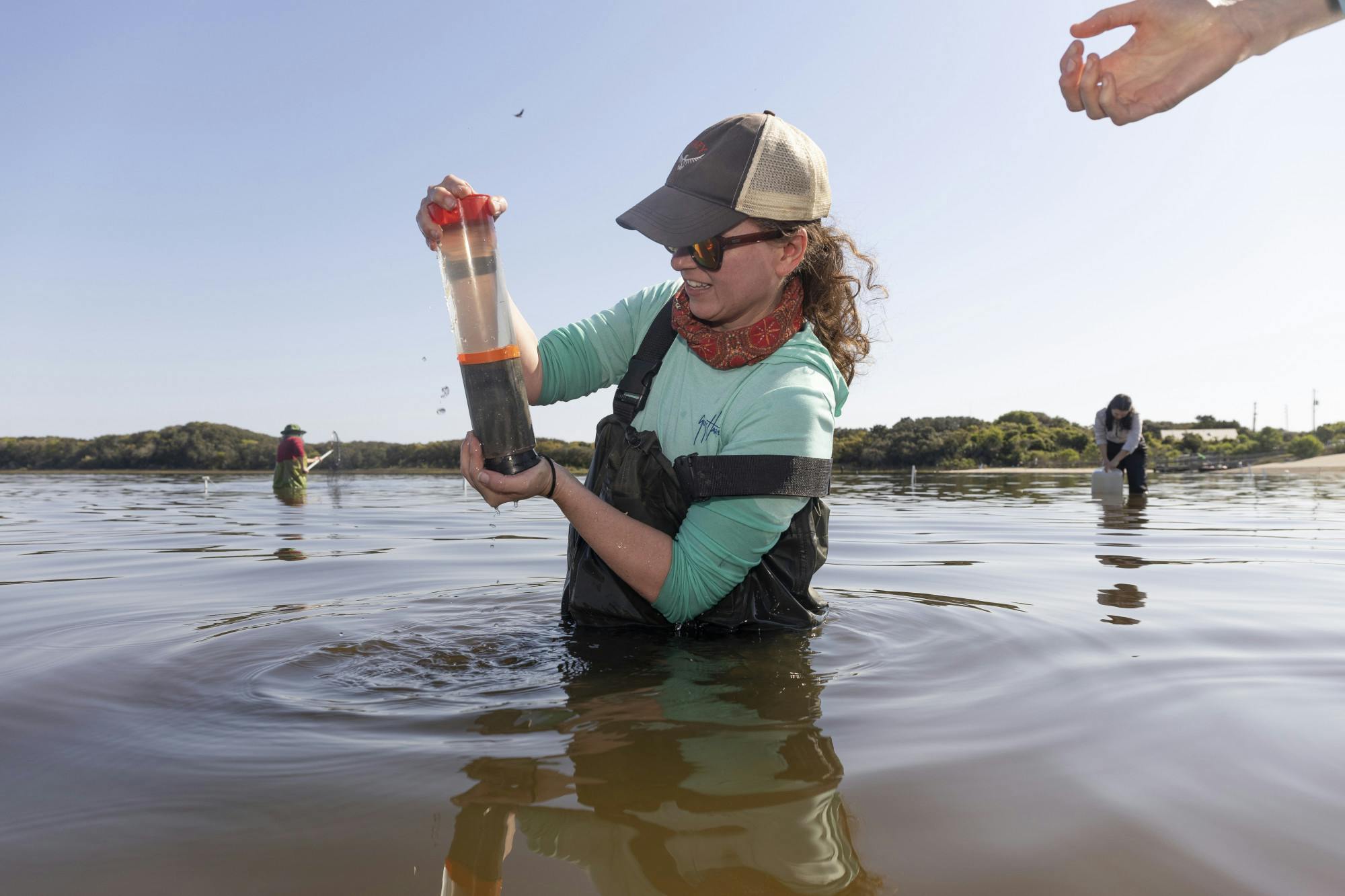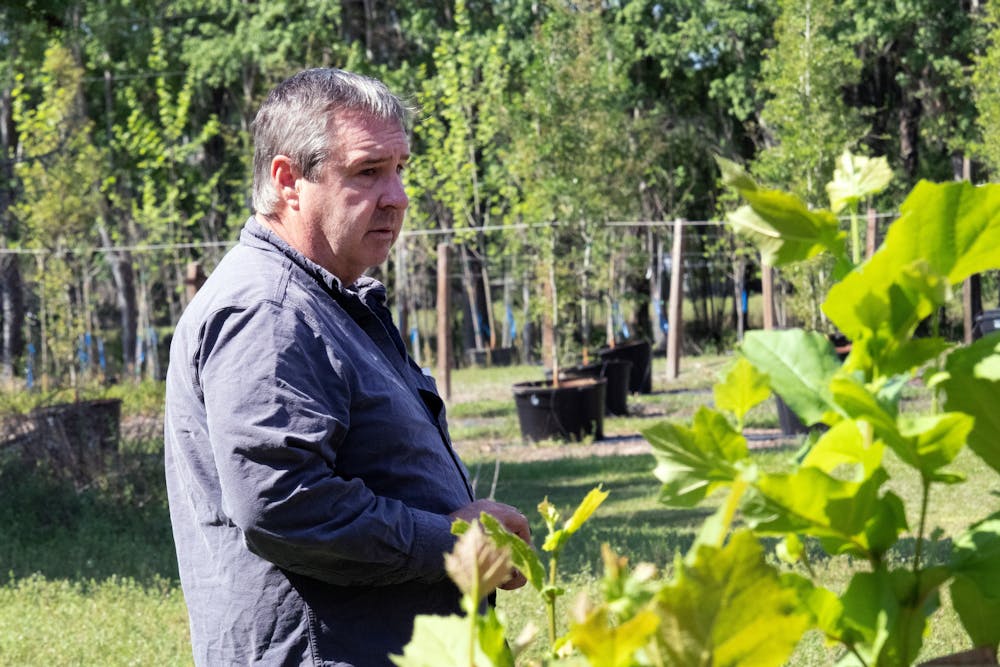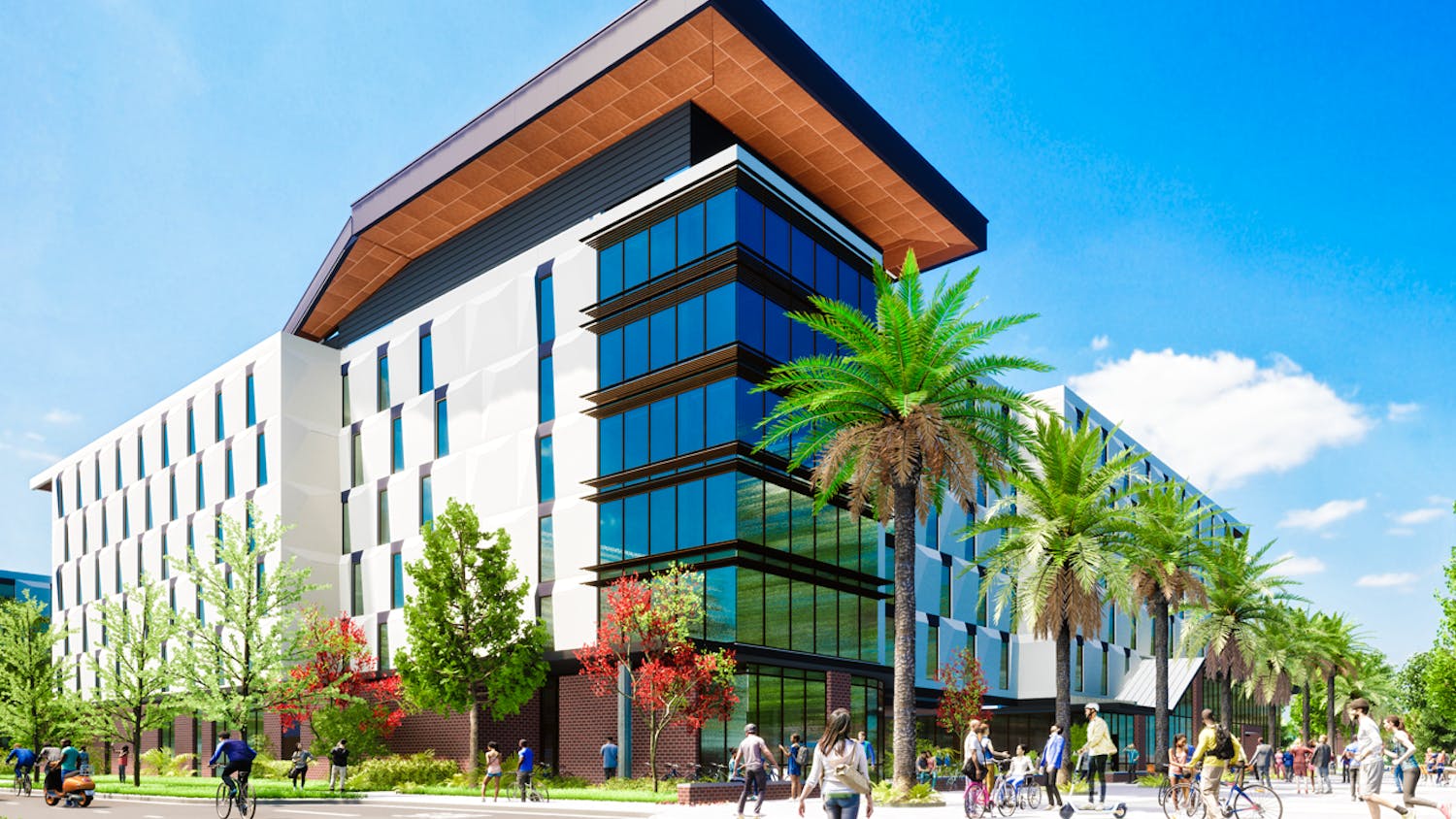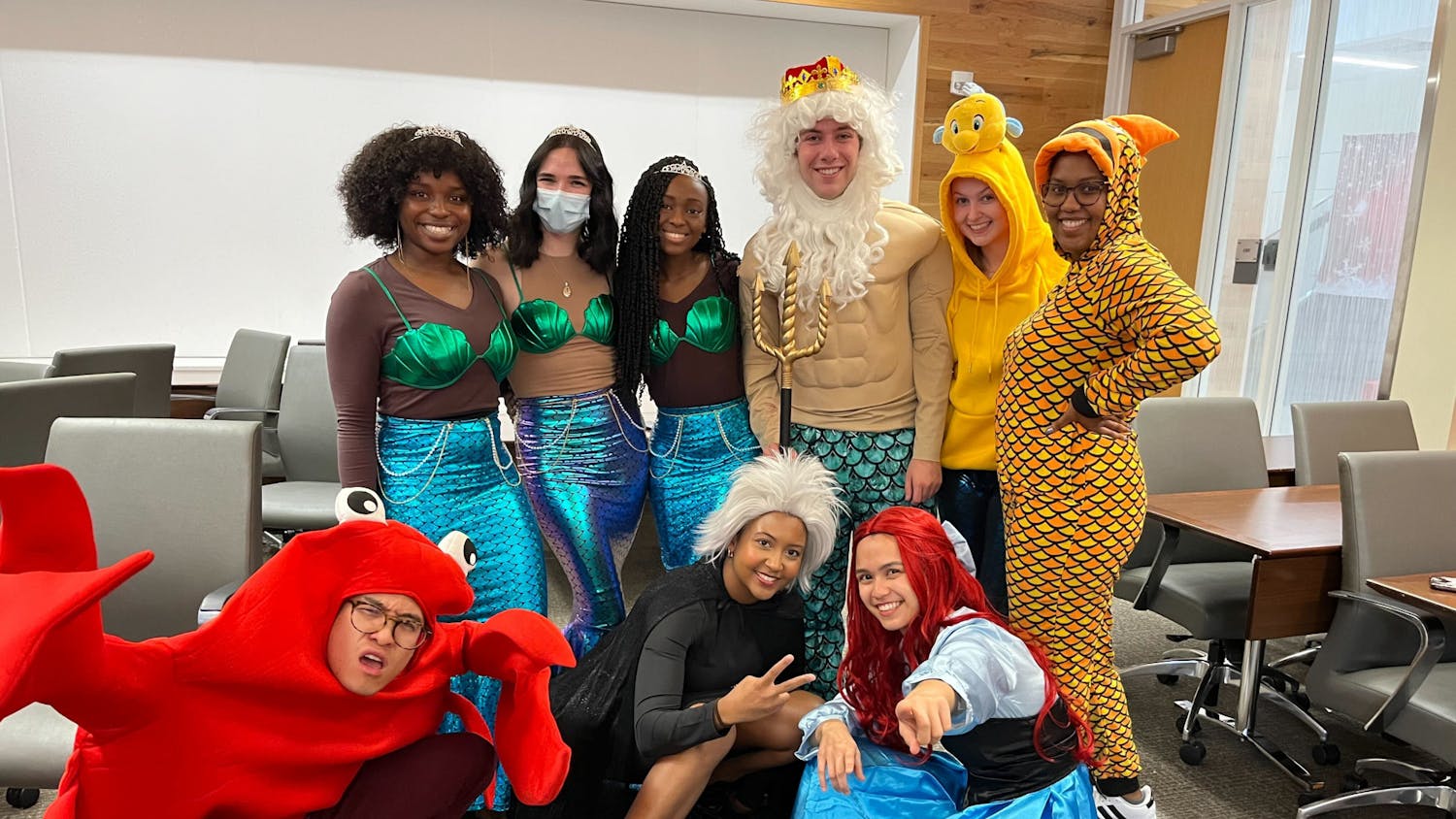UF’s Institute of Food and Agricultural Sciences spans across the state’s 67 counties, delivering environmental research and discoveries to local communities.
Each of IFAS’ roughly 375 extension agents encourage sustainable practices in everyday life — including ways to mitigate climate change.
The Morrill Acts of 1862 and 1890 designated UF with land-grant university — making it one of 105 colleges and universities with land grants under the acts. In 1964, IFAS formed under the act. In 2021, IFAS received $155.6 million of the university’s $861 million fiscal year research funding budget.
IFAS has dispersed its climate change research to center on greenhouse gas emissions, ocean acidification and sea-level rise. Extensions take a local approach to educating Florida residents about climate change, whether it’s regarding forestry, farming or waterways.
Planting trees for survival
Ryan Klein, an environmental horticulture faculty member for IFAS in Gainesville, studies the urban environment to see how man-made developments typically destroy or displace flora and fauna.
“If we start losing large numbers of our trees … utility bills are gonna go up, air quality potentially goes down,” he said.
Planting trees helps maintain the carbon cycle to produce oxygen, but Klein said the ongoing effects of climate change — such as more sporadic wintertime cold fronts, harsher hurricanes and droughts — makes it more difficult for trees to survive.
Climate change can be simplified to mean hotter temperatures, more extreme weather and increased frequency and intensity of storms, he said. Each of these factors could make it more difficult for trees to sustain changing temperatures.
To account for this issue, Klein is searching for various tree species that can withstand Florida’s hardiness zones, which is a range of high and low temperatures a tree is adapted to survive in.
But maintaining the tree industry requires proper construction and development practices. The issue comes down to planning and policymaking at the local level, Klein said.
“Who's in charge at any given time, and how strict do they want to be with some of these groups?” he said. “What codes and ordinances do they have on the books?”
Klein sent a statewide survey to about 3,000 green industry professionals last year asking what tree species are not currently grown or sold in Florida but might have beneficial properties to surviving in the state’s different hardiness zones.
Commercial industries prioritize growing trees consumers will buy, but consumers continue buying what industries produce. This cycle creates a “chicken or the egg” approach, Klein said, where certain tree species are overlooked.
“You have a large group of professionals in this industry that have their own experiences that may not line up with what's commercially being marketed and sold throughout the state,” Klein said.
The research project is an ongoing endeavor, but Klein condensed the list of potential tree species to 20. Once six species are chosen, they will be planted in Quincy, Fort Lauderdale and Gainesville to account for a range of three hardiness zones. Klein’s goal is to find trees that have a high drought tolerance and are resilient to weather extremes.
Farming practices to feed the future
Sheeja George, a research coordinator at the North Florida Research and Education Center in Quincy, Florida, focuses on collaborating with farmers to encourage proper farming techniques.
Crop resiliency is critical to protecting farms and sustaining food production, she said. George focuses on making farms more resilient to the effects of climate change.
Weather uncertainties and extremes deteriorate the quality and quantity of water used for crop systems and rural farming. Making soil resilient and less dependent on water could help overcome the effects of droughts, inconsistent rainfall and freeze events.
Population growth requires increased food production, but this must be done with consideration to the natural resources available and current soil quality, George said. Florida’s population is predicted to increase to 33.7 million residents by 2070 — 14.9 million more people than 2010, according to the Florida 2070 project, published in 2016.
“We are at a time when we need more and more food,” George said. “Our population is increasing, so food is not going out of fashion anytime soon. Everybody needs to be fed.”
George outlined three principles for cropping systems that she directs farmers to follow: always keep soil covered, keep roots in the soil year long and don’t disturb roots.
George also works with IFAS to give the community science-based facts and break down information into digestible concepts. Her goal is to start a domino effect by implementing sustainable practices at a local or household level.
“I feel the responsibility of institutions like IFAS is to help the [laypeople] separate the information from the misinformation around climate change,” she said. “IFAS should never stop doing that. That’s our mission.”
Living Shorelines and soil resiliency

Ashley Smyth and her research team sampling at Guana Preserve.
Ashley Smyth, an assistant professor in biogeochemistry at IFAS’ Tropical Research and Education Center in Homestead, Florida, studies sediments and water quality. She documents how the resiliency of water ecosystems impacts humans on land.
Smyth takes sediment samples from seagrasses, salt marshes and mangroves into the lab and changes the temperature, light, nutrient load, salinity and humidity of the controlled environment. These adjustments simulate the effects of extreme weather or pollution.
“What we're finding is that nature is pretty resilient,” she said.
Although the sediment tests have had strong results, Smyth said water quality concerns are growing. Algae grows faster when water is hot. An overabundance of nutrients can create pollution. So, as global temperatures rise, pollution becomes a greater risk.
Water carries nutrient loads, Smyth said, which are only enhanced in the face of extreme storms and sea levels rising. These events can cause saltwater intrusion, meaning saltwater infiltrates the freshwater systems humans rely on.
One way Smyth relays these concerns and information to Floridians is through the Climate Smart Floridians program, which teaches communities how to reduce greenhouse gas emissions and translates lab research into power points for the public to review. Smyth worked with two other IFAS extension agents to create the program in 2020.
“It is really a unique diversity of players at the table,” she said. “You have to hear a diversity of opinions, and you have to think outside the box.”
IFAS’ climate change research frequently takes extension agents into local communities. Savanna Barry, a regional specialized extension agent in Cedar Key, Florida, encourages sustainable practices through Florida Sea Grant and the Nature Coast Biological Station.
Barry works on Florida Living Shorelines projects, which use salt marshes, mangroves, oyster reefs and seagrasses to stabilize shorelines against erosion from weather and tides. Natural elements are incorporated into human property development to protect buildings and homes.
“If we have a wind that's blowing onshore, in conjunction with high tide, we can see the saltwater coming up into parking lots and streets,” she said. “That can lead to costly maintenance issues for the cities.”
However, coastal development and infrastructure are ill-equipped to withstand the acceleration of rising sea levels. This leads developers and homeowners to build seawalls, which are artificial barriers made of concrete, masonry or sheet piles along shorelines to defend against erosion.
“That is really expensive, first of all, and then it has ecological consequences as well in terms of degrading our intertidal habitats,” she said.
Using natural habitats, such as oysters grading up into vegetated habitats or reefs made from rock, creates structural resistance to dissipate erosive forces before they reach human properties. Although seawalls might sometimes be necessary based on construction regulations and wave energy, Barry said, too many are taking the place of natural resources.
“The time period where seawalls were being built very quickly was probably before we knew what the ecological consequences of them were going to be,” Barry said. “Now, we're stuck in that situation.”
Contact Sophia at sbailly@alligator.org. Follow her on Twitter @sophia_bailly.
Sophia Bailly is the Fall 2024 University Editor. She interned for The Times-Picayune in Louisiana this past summer as a Capitol News Bureau reporter. When she's not reading the news, she can be found listening to podcasts, going for a run or studying Russian.






